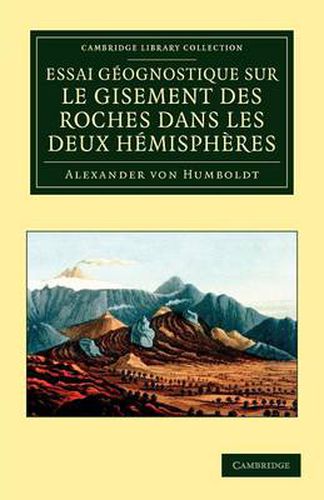Readings Newsletter
Become a Readings Member to make your shopping experience even easier.
Sign in or sign up for free!
You’re not far away from qualifying for FREE standard shipping within Australia
You’ve qualified for FREE standard shipping within Australia
The cart is loading…






Prussian explorer and naturalist Alexander von Humboldt (1769-1859) was described by Darwin as ‘the greatest scientific traveller who ever lived’. His boundless curiosity as well as his scientific and cultural knowledge helped lay the foundations of physical geography, climatology, ecology and oceanography. In 1799, Humboldt embarked on a five-year trip to explore Central and South America. He devoted a large amount of time to the study of geognosie, the science of the origin and distribution of minerals and rocks forming the earth, later known as geology. In 1805, Humboldt published his first impressions of volcanoes and earthquakes in the Americas in his Personal Narrative. In this 1826 work, he makes the first systematic attempt to compare the rocks of the Old and New Worlds. This groundbreaking analysis became one of the most important geological works of its time.
$9.00 standard shipping within Australia
FREE standard shipping within Australia for orders over $100.00
Express & International shipping calculated at checkout
Prussian explorer and naturalist Alexander von Humboldt (1769-1859) was described by Darwin as ‘the greatest scientific traveller who ever lived’. His boundless curiosity as well as his scientific and cultural knowledge helped lay the foundations of physical geography, climatology, ecology and oceanography. In 1799, Humboldt embarked on a five-year trip to explore Central and South America. He devoted a large amount of time to the study of geognosie, the science of the origin and distribution of minerals and rocks forming the earth, later known as geology. In 1805, Humboldt published his first impressions of volcanoes and earthquakes in the Americas in his Personal Narrative. In this 1826 work, he makes the first systematic attempt to compare the rocks of the Old and New Worlds. This groundbreaking analysis became one of the most important geological works of its time.